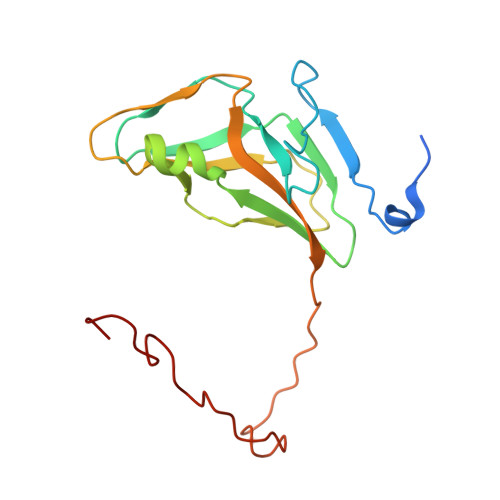Aromatic stacking between nucleobase and enzyme promotes phosphate ester hydrolysis in dUTPase.
Pecsi, I., Leveles, I., Harmat, V., Vertessy, B.G., Toth, J.(2010) Nucleic Acids Res 38: 7179-7186
- PubMed: 20601405
- DOI: https://doi.org/10.1093/nar/gkq584
- Primary Citation of Related Structures:
3HZA, 3LOJ - PubMed Abstract:
Aromatic interactions are well-known players in molecular recognition but their catalytic role in biological systems is less documented. Here, we report that a conserved aromatic stacking interaction between dUTPase and its nucleotide substrate largely contributes to the stabilization of the associative type transition state of the nucleotide hydrolysis reaction. The effect of the aromatic stacking on catalysis is peculiar in that uracil, the aromatic moiety influenced by the aromatic interaction is relatively distant from the site of hydrolysis at the alpha-phosphate group. Using crystallographic, kinetics, optical spectroscopy and thermodynamics calculation approaches we delineate a possible mechanism by which rate acceleration is achieved through the remote π-π interaction. The abundance of similarly positioned aromatic interactions in various nucleotide hydrolyzing enzymes (e.g. most families of ATPases) raises the possibility of the reported phenomenon being a general component of the enzymatic catalysis of phosphate ester hydrolysis.
Organizational Affiliation:
Institute of Enzymology, Biological Research Center, Hungarian Academy of Sciences, Budapest, Hungary.


















